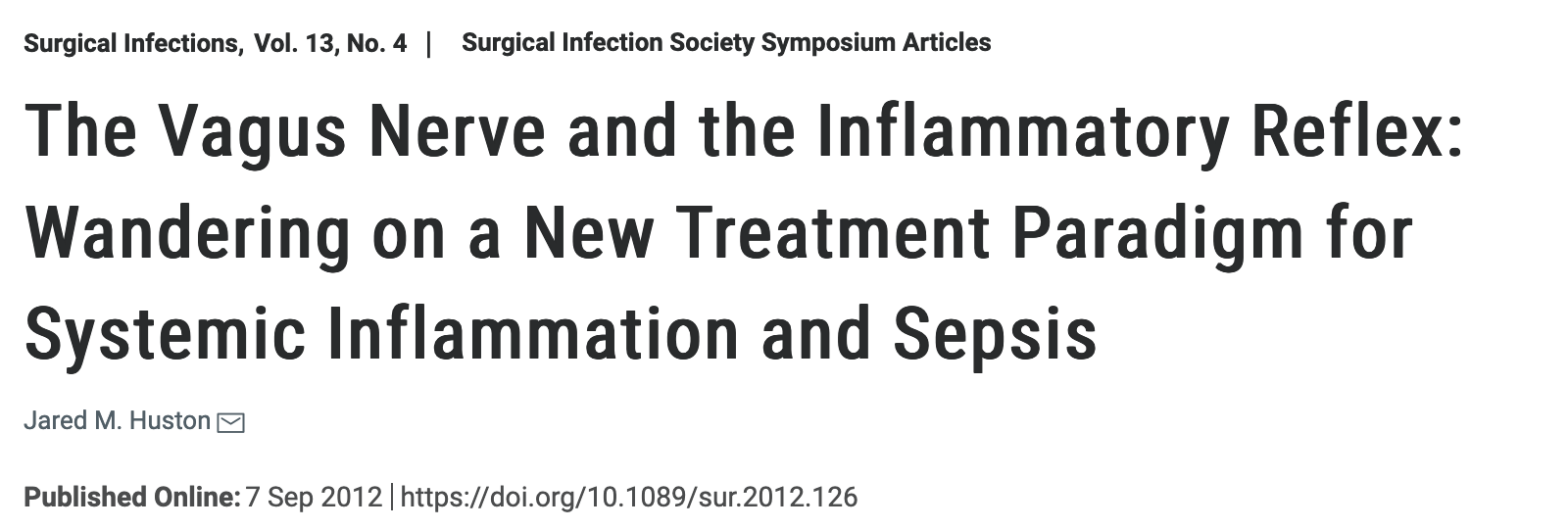
Abstract
Background: The immune system protects the host against dangerous pathogens and toxins. The central nervous system is charged with monitoring and coordinating appropriate responses to internal and external stimuli. The inflammatory reflex sits at the crossroads of these crucial homeostatic systems. This review highlights how the vagus nerve-mediated inflammatory reflex facilitatesrapid and specific exchange of information between the nervous and immune systems to prevent tissue injury and infection.
Methods: Review of the pertinent English-language literature. Nearly two decades of research has elucidated some of the essential anatomic, physiologic, and molecular connections of the inflammatory reflex. The original descriptions of how these key components contribute to afferent and efferent anti-inflammatory vagus nerve signaling are summarized.
Results: The central nervous system recognizes peripheral inflammation via afferent vagus nerve signaling. The brain can attenuate peripheral innate immune responses, including pro-inflammatory cytokine production, leukocyte recruitment, and nuclear factor kappa β activation via α7-nicotinic acetylcholine receptor subunit-dependent, T-lymphocyte-dependent, vagus nerve signaling to spleen. This efferent arm of the inflammatory reflex is referred to as the "cholinergic anti-inflammatory pathway." Activation of this pathway via vagus nerve stimulation or pharmacologic α7 agonists prevents tissue injury in multiple models of systemic inflammation, shock, and sepsis.
Conclusions: The vagus nerve-mediated inflammatory reflex is a powerful ally in the fight against lethal tissue damage after injury and infection. Further studies will help translate the beneficial effects of this pathway into clinical use for our surgical patients.
See FULL text
See FULL text